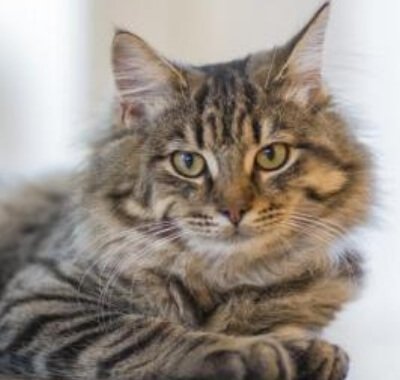
Caring for Geriatric Cats
Cat lives for a long time considering their small size. If you have lived with your cat since its early years, you would know what is normal for your cat in terms of behavior and daily habits.
As a general guideline, cats are considered geriatric or senior upon reaching the final third of their anticipated lifespan. In contrast with dogs, the energy requirements of cats do not change with increasing age. Evidence suggests no apparent change in body composition (lean: fat ratios) with advancing age. This is supported by the fact that obesity is not considered a significant problem in old cats, and there is a greater tendency for geriatric cats to be underweight.
Monitoring their food intake is very important, as senior cats have a different dietary need to younger cats. To avoid digestion problems, transitioning into senior-specific food is essential. It is equally important to frequently feed them small meals rather than give them one big meal. Increase the number of water bowls or pet water fountains around the house to help encourage senior cats to stay hydrated.
Several challenges come with caring for elderly cats. Vet visits are essential throughout your cat’s life, but these are particularly important for geriatric cats. Routine checkups and assessment of possible health issues are highly recommended twice a year.

Cats are masters at hiding their pain and giving the impression that they look fine even if they are not. Sometimes the subtle changes in habits and behavior can indicate that something is wrong. Here are common changes in habits or behavior that occurs in senior cats:
Metabolism: reduced sensitivity to thirst, which could lead to dehydration or suddenly drinking a lot of water (polydipsia), decreased activity and metabolic rate (possibly due to decreased thyroid function)
Special senses: decreased olfaction (reduced food intake leading to a loss of weight and condition), decreased ability to taste, decreased visual acuity
Oral cavity: dental calculus, periodontal disease, loss of teeth, decreased saliva production, gingival hyperplasia
Urinary system: decreased renal function, decreased renal blood flow, decreased glomerular filtration rate
Skeletal system: Osteoarthritis, reduced muscle mass
Cardiovascular system: congestive cardiac failure
It is common for older cats to be slower on their feet, lesser agile, and experience more forms of joint pain. Sometimes they are not able to jump as they used to. Although you may feel that your cat is still capable of leaping up to their favorite lookout spots, giving them gentler ways to reach the top or putting their comfortable spots in a lower place will be helpful. Make your house more accessible for the cat, so exploring and moving around would be easier on their joints and energy levels.
Senior cats need more warmth and extra padding to feel cozy and more comfortable at your place. Adding a layer of blanket to their favorite sleep spots and offering extra pillows to sit on will help them feel relax and happy. Strengthen your bond by giving them constant attention, playtime, and grooming support they want. And as they may struggle to groom themselves, incorporate cat grooming into your daily routine.
Understand the cognitive decline in an old cat. Does your cat start meowing throughout the night or looking at something that isn’t there? Know that these are common signs of feline cognitive dysfunction. Diagnosing cognitive decline can be difficult because the symptoms may vary. Some cats may start eliminating outside the litter box, eliminate in sleeping areas, unable to recognize familiar people or other pets, show confusion and spatial disorientation, groom less, feel anxiety and increase irritability, or make excessive vocalization.
Be sensitive to any changes in your geriatric cat. Even subtle change can be an indication of significant health issues. When in doubt, consult with your veterinarian and see your vet at least every six months.
Contact ABVC at info@abvc.ae or call our clinic at 04 340 8601 for professional senior cat care.
Written by Dr. Alexandra Gulinescu
